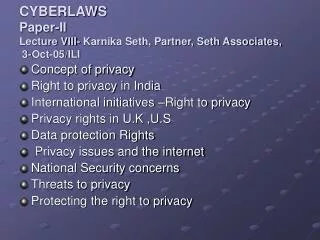The Challenge Essex Ambulance Service (EAS) is an organisation
Assignment Solutions, Case study Answer sheets Project Report and Thesis contact aravind.banakar@gmail.com www.mbacasestudyanswers.com ARAVIND – 09901366442 – 09902787224 INDUSTRIAL MANAGEMENT CASE 2 (30 Marks) Acas and Essex Ambulance Service NHS Trust: Improving consultation and working patterns. The Challenge Essex Ambulance Service (EAS) is an organisation dealing with unscheduled care,predominantly accessed via 999 calls. It was established as an NHS Trust in 1990 and employs around 1,300 people who are primarily members of two unions, Unison and the GMB. The Trust had two inter-related problems. Firstly, relations between management and unions had deteriorated after a national ambulance dispute in 1989. Trade unions did not have recognition at the Trust, and a trade union representative described the management-union relationship throughout the 1990s as “arms-length” and “fairly tense”. During this time, trade union involvement was restricted to representatives attending health and safety committees and representing union members during individual disputes. Consultation between management and the workforce was nonexistent, and this was due in part to the management style of the organisation. A JNCC (joint negotiation and consultation committee) was established at the unions’ insistence, but it was largely ineffective. Decisions made at the JNCC were often overturned or ignored by the Chief Executive Officer (CEO), thereby damaging the committee’s credibility, and the CEO had no involvement in the committee. This contributed to a second problem: a failure to respond to different staff interests by modernizing working arrangements for part-time and relief staff. These workers were unable to influence their work roster and shift patterns to the same extent as full-time and longer serving staff. And because of a lack of consultation mechanisms, it was proving difficult to agree on strategies that would mutually resolve the problem. The Trust eventually recognised trade unions in 1999. In 2002, following the departure of key managers who had resisted engaging in joint consultation, trade union representatives, supported by management, contacted Acas for help in addressing these problems and improving the employment relations climate. Acas was approached, according to the HR manager, because it was seen as “independent, and expert around this area”. How Acas helped In October 2002 the Acas adviser met with management and trade unions to develop two sets of workshop programmes, each addressing the issues identified as problems. Two initial workshop sessions were held to discuss rostering issues. The Acas adviser led these workshops, using techniques to break down barriers between participants, including splitting them into mixed (management-trade union) groups to work on problems and design solutions. Throughout the workshops, the adviser also profiled examples of how problems were resolved in other organisations she had worked with.By the end of the first workshop a number of recommendations were developed, including the need to have clear principles driving consultation, the need for a review of the roster system, and the need to have stronger informal ties between key managementunion players. The Acas adviser then put together a report based on the ideas and suggestions generated at the workshop, and these were discussed at a further workshop, at which participants ratified and agreed a new system of rosters. ‘Break-out groups’ addressed problems in a way that included the voice of all parties, and stakeholders and the adviser also worked with specific sub-groups of staff – for example relief workers (who fill in for workers on holiday or sick leave) – to tackle particular rostering problems and design improved working practices. The adviser organised a subsequent facilitated workshop in early 2003, attended by key Trust managers and union groups. Its aim was to establish the purpose of the JNCC and its terms of reference. Whilst no formal output emerged from the workshop, participants felt that it had formed the basis for the renewal of the forum. The HR manager described the imperatives driving this initiative: “… bear in mind we’re coming from a stance where the unions weren’t involved in negotiation at all … We’re moving towards Agenda for Change now and that’s very much about partnership working with staff-side. So we wanted to make sure that the JNCC had the right terms of reference and was going to be working effectively for both sides to benefit.” The benefits: improved consultation and working patterns: A range of positive outcomes flowed from Acas’ involvement at the Trust, with management and trade union representatives emphasising their significance in light of the relationship difficulties and low levels of trust at the Trust during the 1990s. Firstly, the JNCC has become a central feature of employment relations at the Trust. It now functions effectively, partly as a result of good informal relations between key trade union representatives and HR managers. The Committee has provided a vehicle for regular management-trade union dialogue on a wide variety of issues, including work-life balance and flexible working. The JNCC has also become a crucial medium for discussions around Agenda for Change. Secondly, in terms of work rosters, there is a new system that accommodates the interests of both full-time staff and those on a variety of different contracts. Employees who formerly had little advance knowledge of when they were working can now plan their rest days more clearly. In facilitating changes in working patterns, the Acas project has brought part-time staff closer to the strategic concerns of the Trust. This has meant that human resource planning is clearer and more consensual in nature, and levels of commitment from part-time staff are, according to trade union representatives, higher than in the past. Thirdly, the process of improving consultative mechanisms and the roster system has helped build relationships between management and union representatives, enabling them to develop other new practices relating to, for example, meal breaks and work-life balance initiatives. A joint approach has also been taken to managing the implementation of Agenda for Change, with trade union representatives reporting that they now feel that they have some ownership over its development. There are now ‘joint management-union chairs’ for sub-groups, including Agenda for Change subgroups, each tackling a variety of new issues and reforms. These new issues are approached in a very different way to the past, when the level of dialogue was virtually non-existent. There are still differences and problems, but the new framework has sustained a high degree of joint working. Central to this has been the strong explicit commitment and support for consultative mechanisms from the union and senior management, including the interim CEO, who chaired the JNCC. As one trade union representative explained: “(The Acas project) has built a foundation to move forward on the working lives for our relief staff, for full time staff. And we’ve now got the JNCC firmly established as the main staff conduit to the head of the organisation on a formal basis.”According to HR managers and trade union representatives, longer term benefits of Acas involvement have become evident over the last two years. These include increased levels of trust between employees, unions and managers, and improved formal and informal workplace relations. Trade union representatives and managers now speak to each other openly and constructively, and improvements to operational systems and practices are the subject of consultation and dialogue to a much greater extent than in the past. Such is the nature of the turnaround that Trust managers and union representatives are often called upon to provide advice to other Trusts who are attempting to improve employer-trade union relationships. Questions:- 1. Give the brief history of the above mentioned case study 2. What was the problem? How it was resolved? 3. What was the effect of solution on the unit’s mechanism? 4. What is the message ? Assignment Solutions, Case study Answer sheets Project Report and Thesis contact aravind.banakar@gmail.com www.mbacasestudyanswers.com ARAVIND – 09901366442 – 09902787224
★
★
★
★
★
77 views • 6 slides

